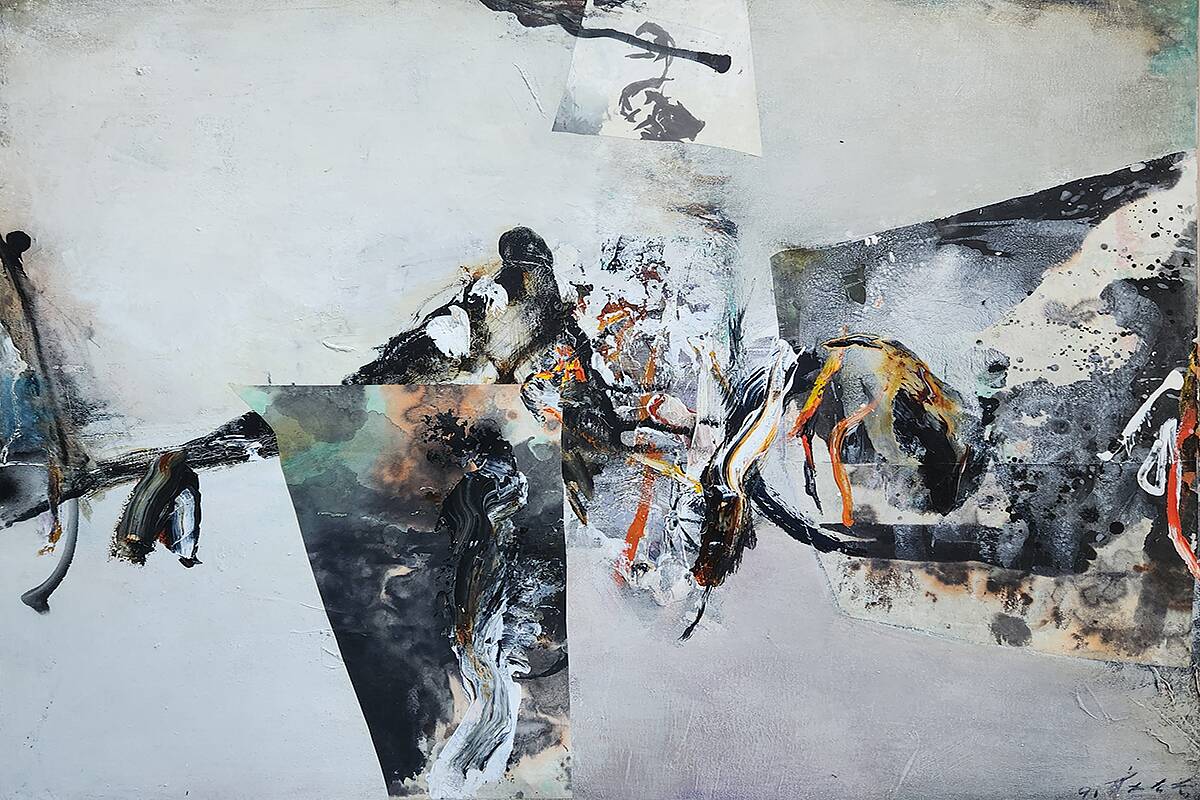
Chuang Che, Ma Hao, Henry Chuang: Mystic Symbolism
1 – 5PM
Opening Reception: May 14, 2025, 3-5pm
Chinese American Arts Council/Gallery 456 is pleased to present Chuang Che, Ma Hao, Henry Chuang: Mystic Symbolism, on view from May 14, 2025, through May 30, 2025.
Featuring the work of Chuang Che, Ma Hao, and Henry Chuang, this exhibition draws from the spiritual, the metaphysical, and the deeply personal to probe the threshold between memory and amnesia, beauty and the grotesque, history and automation.
At its core lies a provocation: what happens when blank canvases fill vast spaces? What are we to think, feel, or become when the gestures of art, once sacred, are replaced by code? This is a world where politeness fades, meaning fragments, and even chess champions fall to machines. Yet in that rupture, there remains the possibility of reawakening—a return to the essence of mark-making, of the brushstroke for its own sake, of mindful presence in the face of technological dislocation.
Mystic Symbolism does not simply critique modernity; it mythologizes the human condition within it. Through found objects, mystical forms, and painterly gestures, the artists propose a radical reinvigoration of past glories—not as a retreat, but as a lifeline. With tongue-in-cheek flamboyance and unflinching vision, their work occupies a space of “anti-Pop futuristic modernity”: heightened, electric, unapologetic.
Here, art is not entertainment. It is prophecy, it is resistance. It is the beautiful and the ugly, entwined.
About the Artists
Chuang Che (b. 1934, Beijing, China)
Chuang Che is a pioneering figure in Chinese abstraction, renowned for integrating traditional Chinese calligraphy with Western Abstract Expressionism. Born into a scholarly family—his father was a calligrapher and vice director of the National Palace Museum—Chuang was immersed in classical Chinese art from an early age. He studied at the National Taiwan Normal University under Chu Teh-Chun and became a key member of the Fifth Moon Group, which sought to modernize Chinese painting. In 1966, a Rockefeller Foundation grant enabled him to study in the United States, where he absorbed contemporary Western art movements. Settling in New York in 1973, Chuang developed a unique style characterized by dynamic brushwork and a fusion of Eastern and Western aesthetics. His works have been exhibited globally and are held in prominent collections, including the Cleveland Museum of Art, Detroit Institute of Arts, and Centre Pompidou.art is not entertainment. It is prophecy, it is resistance. It is the beautiful and the ugly, entwined.
Ma Hao
Ma Hao is a Chinese artist whose work explores the intersection of traditional Chinese art forms and contemporary expression. While specific biographical details are limited, Ma Hao’s inclusion in exhibitions alongside Chuang Che suggests a shared commitment to blending Eastern artistic heritage with modern techniques. Her work contributes to the ongoing dialogue between past and present in Chinese art.
Henry Chuang
Henry Chuang is an artist shaped by a generation marked by nihilism and existential inquiry. Educated at Pratt Institute, where they studied under Max Gimblett, their artistic and philosophical foundation was influenced by thinkers such as Kierkegaard and by traditions of Zen and transcendental meditation.
Their practice reflects a lifelong tension between desire and detachment, between the pursuit of meaning and the acceptance of impermanence. Once driven by the need to want, to chase, to prove, the artist now embraces a quieter clarity with a focus on appreciation rather than accumulation.
Grounded in the belief that what we leave behind is not material but the memory of how we lived and treated others, their work explores the ephemeral, the sacred, and the personal. It is not about reaching a destination but about the process of seeking, accompanying, and perhaps, in time, understanding.is the son of Chuang Che and Ma Hao, continuing the family’s artistic legacy. While detailed information about his career is scarce, his participation in exhibitions with his parents indicates an engagement with themes central to their work, such as the fusion of Eastern and Western artistic traditions. Henry’s contributions add a generational dimension to the exploration of identity and heritage in contemporary art.
Please contact info@caacarts.org for more information.
Gallery 456
Hours: M-F, 1-5PM and by appointment
Address: 456 Broadway, 3rd Floor, New York, NY 10013, Elevator Accessible Contact: (212) 431-9740 | info@caacarts.org
Website: www.caacarts.org | Instagram/Facebook/Twitter: @caacarts
Chinese American Arts Council’s Gallery 456 Visual Arts Exhibition Series is made possible by the New York State Council on the Arts with the support of the Office of the Governor and the New York State Legislature.